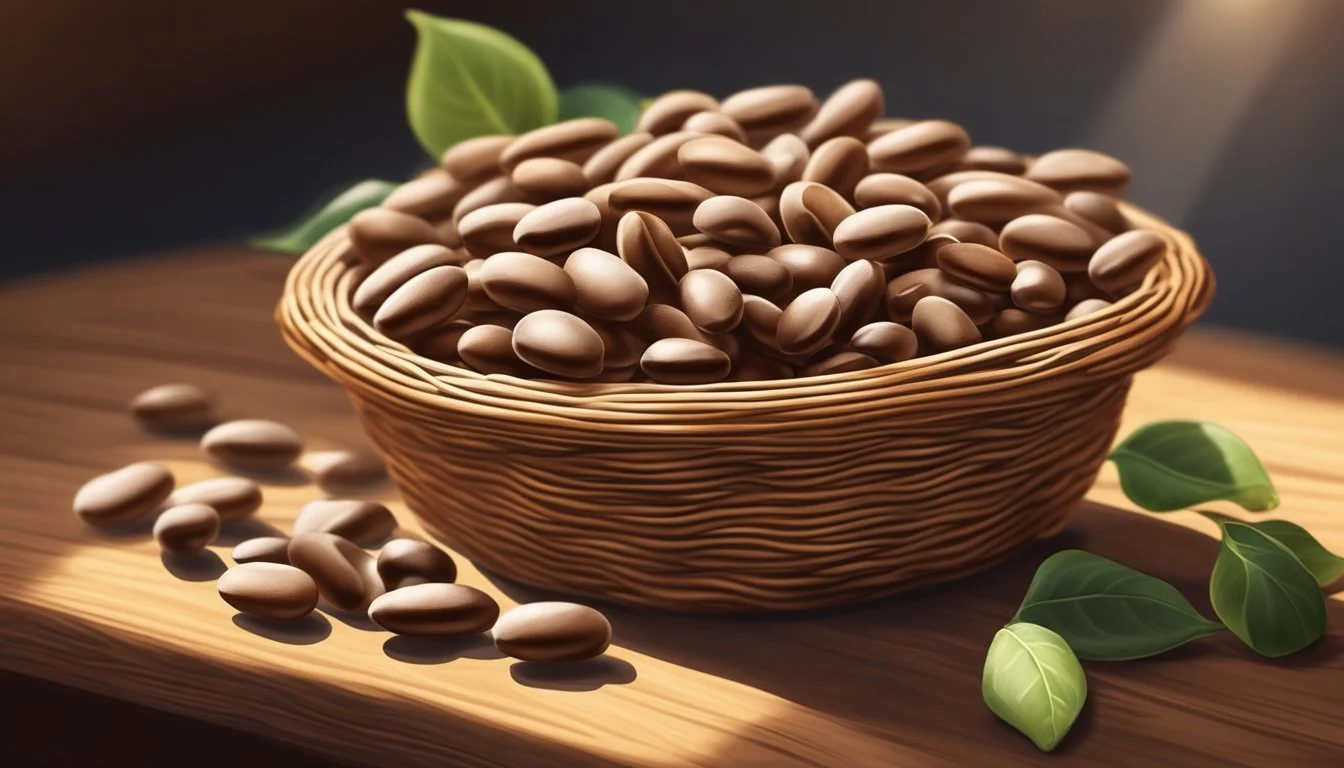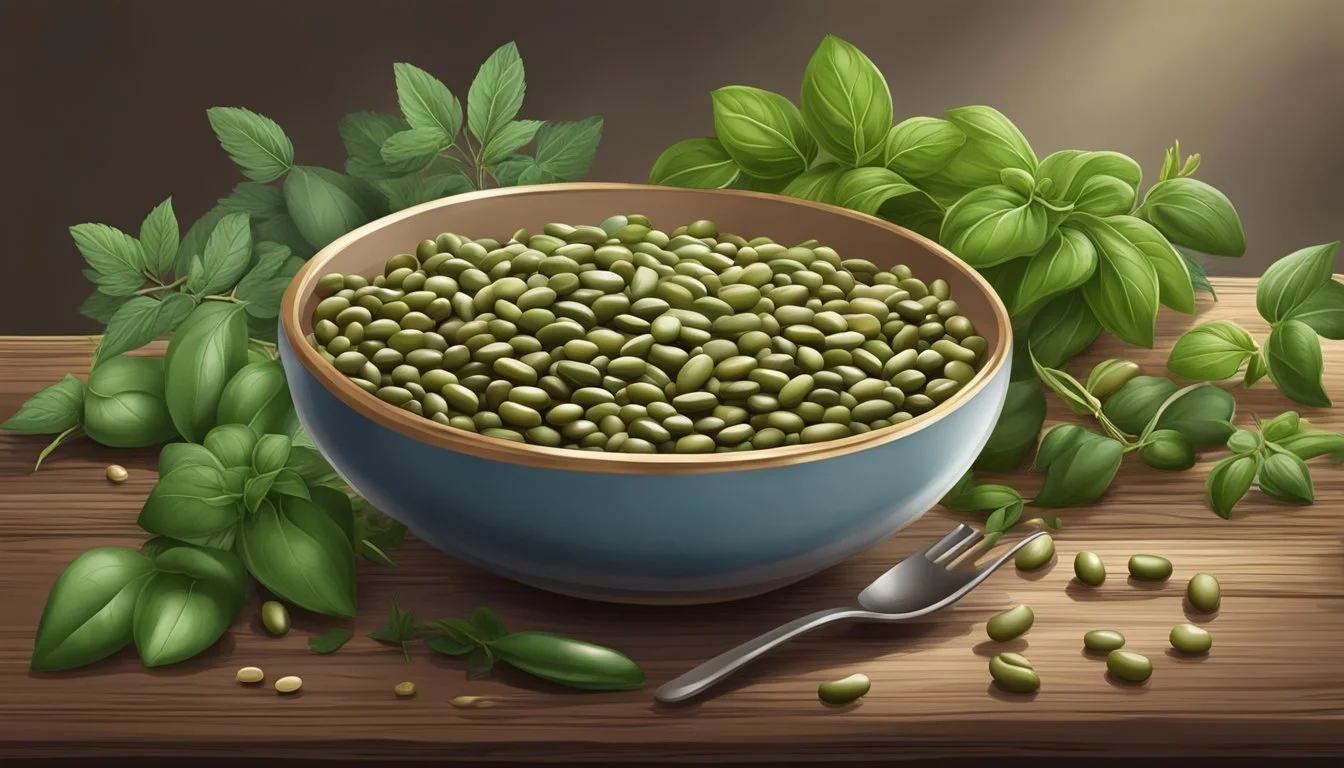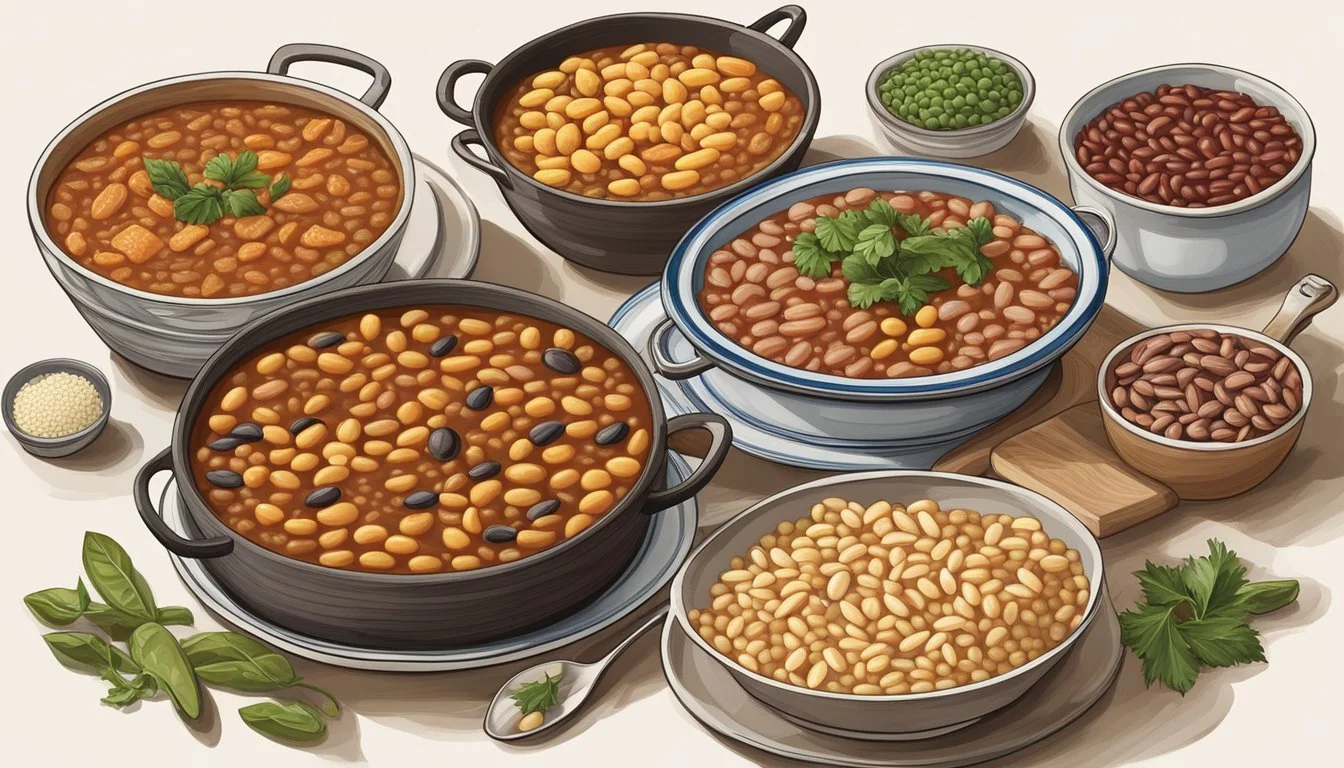Tarbais Beans Substitutes
Best Alternatives for Your Recipes
Tarbais beans, renowned for their unique taste and texture, are a staple in southwestern France, especially in the traditional dish, cassoulet. These large, thin-skinned beans have sweet, milky flesh and are often handpicked, making them a prized ingredient. While authentic cassoulet traditionally calls for Tarbais beans, several suitable substitutes can deliver comparable results.
Great Northern beans and cannellini beans are excellent alternatives to Tarbais beans. These varieties provide a similar creamy texture and are readily available, making them convenient options for home cooks. Pinto beans, with their creamy texture and slightly nutty flavor, are another versatile and accessible choice that works well in various recipes.
Flageolet and lingot beans also make fine substitutes, closely mimicking the properties of Tarbais beans. These varieties hold up well to the long, slow simmering required for cassoulet, delivering a velvety consistency and rich taste. Experimenting with these substitutes can help maintain the integrity and flavor of authentic cassoulet and other bean-centric dishes.
Understanding Tarbais Beans
Tarbais beans, known for their rich nutritional profile and versatility in the kitchen, are deeply rooted in French culinary traditions, particularly in the iconic cassoulet. Originating from southwestern France, these beans are prized for their creamy texture and inherent goodness.
Origin and Cultural Significance
Tarbais beans hail from the Tarbes region in southwestern France. They are integral to the traditional French cassoulet, a slow-cooked casserole featuring meats like duck confit, sausage, and pork. The beans became famous through their association with this hearty dish, particularly in Toulouse and surrounding areas. French cuisine values these beans highly, not just for their culinary merits but also for their cultural heritage.
Nutritional Benefits
Tarbais beans offer an impressive nutritional profile. They are rich in protein and dietary fiber, aiding both muscle repair and digestion. Key nutrients include iron, vitamins, magnesium, phosphorus, and potassium. A serving of Tarbais beans is also low in fat and relatively low in calories, making them an excellent choice for balanced diets. Moreover, they provide critical micronutrients such as manganese and folate, important for various bodily functions.
Culinary Uses
In culinary practices, Tarbais beans are celebrated for their versatility. They shine in dishes like cassoulet, where they absorb flavors from meats like lamb, goose, and pork. Beyond cassoulet, they enhance soups, stews, salads, and casseroles with their creamy texture. They pair beautifully with a variety of vegetables like carrots, tomato, and herbs such as bay leaf and rosemary. These beans also complement olive oil-based dishes, adding richness and depth.
Cooking Techniques
To achieve the perfect texture, soaking Tarbais beans before cooking is essential. Traditional methods involve boiling and simmering until tender, typically around 1-3 hours. For faster results, a pressure cooker can be used. In cassoulet, beans often bake alongside meats like duck confit and sausage, allowing flavors to meld. Properly cooked, these beans become tender while retaining a slight firmness, making them ideal for a variety of hearty dishes.
Substituting Tarbais Beans
Tarbais beans are traditionally used in dishes like cassoulet, but they can be substituted with various ingredients depending on dietary preferences. Meat-based options provide rich flavors, while vegetarian and vegan substitutes offer nutritional benefits.
Meat-Based Substitutes
Sausage: Sausages, especially those made from pork or turkey, can provide the hearty texture and flavor profile similar to Tarbais beans when cooked in stews or casseroles. Use pre-cooked sausage to cut down on preparation time.
Bacon: Bacon adds a smoky and savory taste. It's excellent when chopped and rendered, delivering a similar depth to dishes that require Tarbais beans. Pair with other beans to achieve the desired consistency.
Duck Confit: A traditional component in cassoulet, duck confit offers a rich, fatty flavor. It complements dishes where Tarbais beans would be used. Shred the duck meat and mix it thoroughly to maintain the consistency of the dish.
Lamb or Goose: These meats provide robust flavors. Slow-cooking lamb or goose until tender helps them integrate well with other ingredients, maintaining the dish's overall depth.
Vegetarian and Vegan Alternatives
Corona Beans: Corona beans have a slightly sweeter taste and take longer to cook. They work well in soups and stews, providing a similar texture to Tarbais beans. Adjust cooking times as needed.
Pinto Beans: Pinto beans offer a creamy texture and a nutty flavor. They are versatile, suitable for Mexican dishes like burritos, enchiladas, and refried beans. Mash them to create a smooth filling.
Tofu: Tofu is an excellent vegan substitute, especially when marinated and cooked to absorb surrounding flavors. It provides protein and can be cubed or crumbled.
Quinoa and Rice: For a non-bean alternative, quinoa and rice work well. They complement a variety of dishes and absorb flavors nicely. They are perfect for those seeking a gluten-free option.
Alternatives by Similarity
When considering substitutes for Tarbais beans, it's crucial to focus on those with a comparable flavor and texture, similar nutritional profiles, and suitability for specific dishes. This will ensure that the chosen substitutes effectively match the culinary and dietary expectations.
Flavor and Texture Comparable Beans
For a similar flavor and texture, Cannellini beans and Great Northern beans are excellent choices. Both have a mild, slightly nutty flavor and a creamy texture, making them suitable in many dishes where Tarbais beans would be used.
Another good option is Flageolet beans, known for their tender texture and delicate taste. They are often used in French cuisine, similar to Tarbais beans. Navy beans also serve as a viable substitute with their smooth texture and subtle flavor, fitting well into soups and stews.
Nutritional Profile Equivalents
Beans similar in nutritional content to Tarbais beans include pinto beans and black beans. They are rich in protein, fiber, iron, and magnesium.
For those looking for low-calorie alternatives, Chickpeas and white kidney beans offer significant nutrients like phosphorus, potassium, and manganese along with folate and dietary fiber. These beans support a balanced diet while replicating the health benefits of Tarbais beans. Pinto beans provide a notable source of vitamins and minerals, keeping the nutritional intake robust.
Beans for Specific Dishes
Depending on the recipe, some beans are better suited for specific dishes. For example, black beans and pinto beans are ideal for Mexican dishes like tacos and enchiladas due to their hearty flavor and creamy texture.
Cannellini beans are perfect for Italian cuisine, as they blend well in pasta dishes and hearty soups. In casseroles and salads, Great Northern beans and navy beans are exceptional choices as they hold their shape well and absorb flavors effectively.
For spreads such as hummus or dips, chickpeas are unbeatable, offering a smooth and creamy texture after being blended. White kidney beans add a similar richness to dips and spreads, making them versatile in various culinary applications.
Alternative Beans in Different Cuisines
Tarbais beans are often required for specific dishes like cassoulet, but many alternatives are available that suit various culinary traditions. These substitutes can enhance Mediterranean, European, Latin American, and Caribbean cuisines, making them adaptable to regional recipes without sacrificing flavor or texture.
Mediterranean and European Substitutes
Cannellini beans, also known as white kidney beans, serve as an excellent substitute in Italian and French dishes, including salads and stews. They have a mild flavor and a creamy texture, making them ideal for soups like Pasta e Fagioli or minestrone. Flageolet beans are another European option, particularly in French cuisine. Their delicate flavor and smooth consistency are well-suited for classic dishes like cassoulet. Both of these beans absorb flavors well, enhancing the overall taste of the dish.
Latin American and Caribbean Substitutes
In Latin American and Caribbean cuisines, pinto beans and black beans frequently replace Tarbais beans. Pinto beans, with their creamy texture and slightly nutty flavor, are staples in Mexican dishes like refried beans, enchiladas, and burritos. Black beans are widely used in various Caribbean and Latin American recipes, playing a starring role in black beans and rice. These beans are valued for their rich flavor and versatility, adding depth to stews, soups, and salads.
These alternatives allow home cooks and chefs to replicate the texture and flavor of Tarbais beans in diverse culinary contexts, ensuring that the essence of regional dishes is maintained.
Non-Bean Substitutes
When looking for alternatives to Tarbais beans, options are available that fall outside the bean category but still offer valuable nutrients and flavors.
Grain and Seed Alternatives
Quinoa is an excellent substitute. It is a seed rich in protein and fiber, making it suitable for vegan diets. It has a nutty flavor and a fluffy texture that works well in stews and salads.
Sorghum, a versatile grain, also serves as a good option. It is gluten-free and high in antioxidants, adding both nutrition and a slightly sweet taste to dishes. Sorghum can be used in casseroles and soups.
Rice, particularly brown rice, is widely available and nutritious. It provides a good source of complex carbohydrates and pairs well with various vegetables and sauces. Rice can be easily incorporated into many recipes that call for beans.
Vegetable and Legume Alternatives
Lentils offer a high protein and fiber content and can easily replace beans in many recipes. They cook faster than most beans and can be used in soups, stews, and salads. Lentils are a staple in vegan and vegetarian diets.
Peas, including green peas and split peas, are another substitute from the legume family. They bring a mildly sweet flavor and a good protein boost. Peas are great in soups and side dishes.
Carrots and Squash are nutritious vegetables that can be diced and added to recipes in place of beans. They provide a different texture and a natural sweetness, making them suitable for enhancing the flavor profile of many dishes.







